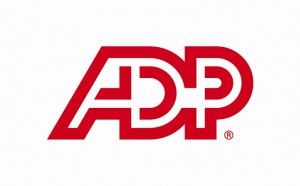Everyone in my professional world, and most business people in general, know ADP — or at least they think they do. While ADP offers a very wide range of products/services to both employers and all types of vehicle dealers, they continue to be known most widely as “the payroll company.”
The company’s history is one of which any founder could be proud. And when the current CEO, Gary Butler (only the 5th since ADP’s founding in 1949), hands over the reins to his successor, it will go as smoothly as such turnovers have done in the past. No drama, no palace coups, no unprepared and/or disrespected successors at ADP.
For much of its history, ADP has been known as a sales (pillar #1) and services (pillar #2) machine, training a good many of those who have gone on to sales and operations leadership roles with other industry firms or even to founding their own very successful ADP competitors, like Scott Scherr, the founder/CEO of Ultimate Software. Yes, our industry has benefitted mightily from the training ground that ADP has been for most of its history.
Less well-known than its sales and services acumen is ADP’s mastery of financial management (pillar #3), especially the management of the float that accompanies some of their product categories. This is absolutely not my area of expertise, and it hasn’t been a huge contributor to the bottom line these last few years as interest rates have been lower than low. But just wait until those rates go back up (and they surely will before the global economy recovers) and see what drops directly to ADP’s bottom line.
What ADP hasn’t been as well-known for in recent years is mastery of HR technology. They’ve acquired quite a few applications, partnered for others, and taken some not always good natured jabs (I hope they’ve seen mine as at least well-intended) for their “classic” payroll. But 2011 may well be the year in which ADP gets noticed for doing more than building a Rube Goldberg out of more piece-parts than anyone outside the firm can track — and then spending a fortune to maintain those connections and keep everything compliant.
I believe that ADP has reached a turning point in 2011 when it comes to their launch of several new products which reflect some fundamental changes in how ADP invests in and manages technology (pillar #4). From an entirely mobile payroll for the lower end of the market (called RUN for Mobile) to specific mobile apps for their larger customers and on to the integrated and contemporary UX of ADP Vantage HCM, there’s a lot happening in technology at ADP — and not a moment too soon, because the competition is getting tougher by the minute.
What’s most interesting to me isn’t what you can see but rather what’s going on “behind the mirror” of ADP’s new products. They’re bringing order to the many, many years of accumulated applications, investing for the future while retiring some of the past, and moving as rapidly as practical toward a common reference object model to support their new development as well as their refactoring of existing software. These aren’t the sexy moves that seem to garner market buzz, but they are the essential moves of a technology-based services firm that intends to be as successful in their next sixty years as they’ve been in the past sixty.
Having mastered sales, services, and financial management, I believe that ADP is now focused heavily on demonstrating visibly that they’ve also got technology chops. With decades of accumulated software, it’s no mean feat to update/integrate/overhaul/streamline/etc. their platform inventory, but I for one would not bet against them.
In the interests of full disclosure, ADP has been a client, and I have provided specific guidance to their reference object model development. Ultimate Software, also mentioned in this post, is a current client.
